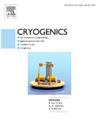DC and quench performance assessment from the EUROfusion HTS Quench Experiment campaign and projection to magnet operation
IF 2.1
3区 工程技术
Q3 PHYSICS, APPLIED
引用次数: 0
Abstract
Seven different high current conductors for fusion applications, made of High Temperature Superconducting stacked tapes, have been successfully tested in the Quench Experiment campaign supported by EUROfusion and carried out in SULTAN. The aim of this extensive experimental campaign is to explore the quench initiation and propagation in different conditions as well as different conductor design. The measurements show that there is a common behaviour to all layouts, i.e., the DC performance of such conductors have degraded after the quench test campaign, and more systematic DC experiments showed that it is likely that a temperature peak beyond 150 K on the stack may lead to the degradation. These results are analyzed and discussed in the present work. This allowed identifying a reference threshold for the safe operation in a real magnet. Through a simple analytical model, based on the assumption of adiabatic quench propagation, the projection to the expected performance in the magnet configuration is carried out, focusing on the maximum hotspot temperature reached, depending on the layout. It is shown that conductors with a larger effective heat capacity, although having a smaller quench propagation velocity, end up having lower hotspot temperature.
从EUROfusion的高温超导淬火实验活动和对磁体操作的预测中评估直流和淬火性能
由高温超导堆叠带制成的7种不同的用于聚变应用的大电流导体,已在由EUROfusion支持并在苏丹进行的淬火实验活动中成功测试。这项广泛的实验活动的目的是探索在不同条件下以及不同导体设计下的淬火起爆和传播。测量表明,所有布局都有一个共同的行为,即,这些导体的直流性能在淬火测试活动后下降,更系统的直流实验表明,堆叠上超过150 K的温度峰值可能导致退化。本文对这些结果进行了分析和讨论。这样就可以确定在真实磁铁中安全运行的参考阈值。通过一个简单的解析模型,基于绝热淬火传播的假设,对磁体配置中的预期性能进行了投影,重点关注所达到的最高热点温度,取决于布局。结果表明,有效热容较大的导体,虽然淬火传播速度较小,但其热点温度较低。
本文章由计算机程序翻译,如有差异,请以英文原文为准。
求助全文
约1分钟内获得全文
求助全文
来源期刊

Cryogenics
物理-热力学
CiteScore
3.80
自引率
9.50%
发文量
0
审稿时长
2.1 months
期刊介绍:
Cryogenics is the world''s leading journal focusing on all aspects of cryoengineering and cryogenics. Papers published in Cryogenics cover a wide variety of subjects in low temperature engineering and research. Among the areas covered are:
- Applications of superconductivity: magnets, electronics, devices
- Superconductors and their properties
- Properties of materials: metals, alloys, composites, polymers, insulations
- New applications of cryogenic technology to processes, devices, machinery
- Refrigeration and liquefaction technology
- Thermodynamics
- Fluid properties and fluid mechanics
- Heat transfer
- Thermometry and measurement science
- Cryogenics in medicine
- Cryoelectronics
 求助内容:
求助内容: 应助结果提醒方式:
应助结果提醒方式:


